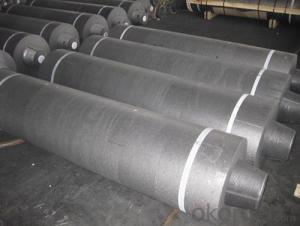Graphite electrodes are a fascinating subject, aren’t they? They’re not just a mundane industrial material; they’re the unsung heroes of many processes. Beyond the electric arc furnace, where they’re most commonly known for their role, these versatile little marvels have a plethora of applications that many people might not be aware of. Let’s dive into the world of graphite electrodes and explore their many uses, shall we?
Firstly, let’s talk about their use in the electric arc furnace, just to set the stage. These furnaces are used for producing pig iron, steel, and other ferrous and non-ferrous alloys. The graphite electrodes play a crucial role in this process by conducting electricity and generating the intense heat required for melting the metal. But that’s just the tip of the iceberg.
One of the lesser-known applications of graphite electrodes is in the production of synthetic diamonds. Yes, you read that right! These electrodes are used in a process called High Pressure High Temperature (HPHT) synthesis, where they help create the extreme conditions necessary for transforming carbon into the beautiful, sparkling diamonds we all know and love.
Another intriguing application is in the manufacture of silicon metal, an essential component in the production of solar panels. The process involves the reduction of quartz with carbon, and graphite electrodes are used to maintain the electrical arc that facilitates this reduction. Without them, our renewable energy efforts might not be as advanced as they are today.
Did you know that graphite electrodes are also used in the production of various chemicals? They’re used as anodes in the electrolysis of water to produce hydrogen and oxygen. This process is not only vital for the chemical industry but also for fuel cells and other clean energy technologies.
And let’s not forget their role in the glass industry. Graphite electrodes are used in melting furnaces to heat the raw materials to the high temperatures required for glass production. Their ability to withstand high temperatures and resist chemical reactions makes them perfect for this application.
But it doesn’t end there. Graphite electrodes are also used in the production of cement, where they serve as an energy-efficient alternative to traditional materials. They’re even used in the purification of water and wastewater treatment plants, thanks to their excellent electrical conductivity and resistance to corrosion.
One of the most exciting applications of graphite electrodes is in the field of nuclear power. They’re used in the production of tritium, a radioactive isotope of hydrogen, which is crucial for nuclear fusion reactors. This is a cutting-edge application that highlights the versatility and importance of these materials.
In the medical field, graphite electrodes find use in various diagnostic and therapeutic devices. They’re used in electrotherapy for treating muscle and nerve disorders, as well as in electrocardiogram (ECG) machines for monitoring heart activity.
The versatility of graphite electrodes doesn’t stop there. They’re also used in the metallurgical industry for the refining of metals like copper, zinc, and lead. Their ability to conduct electricity and withstand high temperatures makes them indispensable in these processes.
Another application that might surprise you is in the field of space exploration. Graphite electrodes are used in the production of rocket propellants and in the development of heat shields for spacecraft. Their high-temperature resistance and electrical conductivity make them perfect for these high-stress environments.
Finally, let’s talk about the artistic side of graphite electrodes. They’re used in the creation of various types of art, from sculptures to paintings, thanks to their unique properties. Artists have found innovative ways to incorporate these materials into their work, showcasing their versatility beyond the industrial world.
In conclusion, graphite electrodes are far more than just a component in the electric arc furnace. They have a wide range of applications that span across various industries, from energy and medical to artistic and space exploration. Their versatility, durability, and unique properties make them an essential material in our modern world. So next time you think of graphite electrodes, remember that they’re not just a simple industrial component but a key player in many of the technologies and processes that shape our lives.

